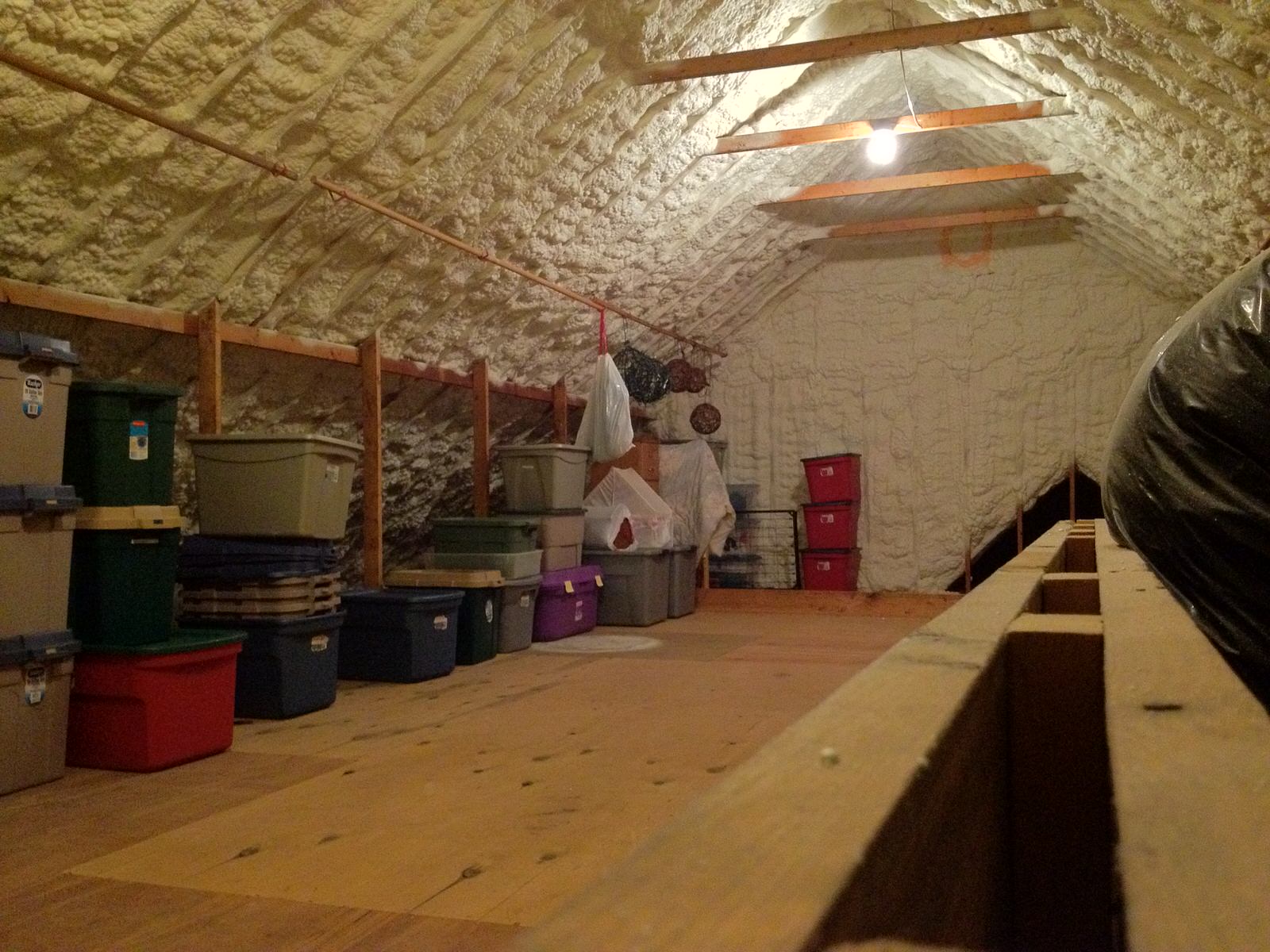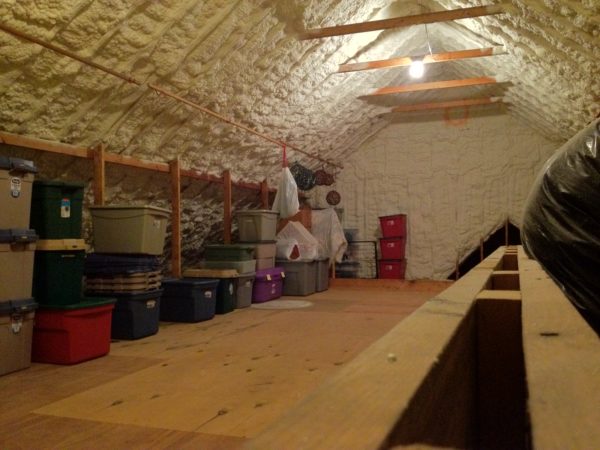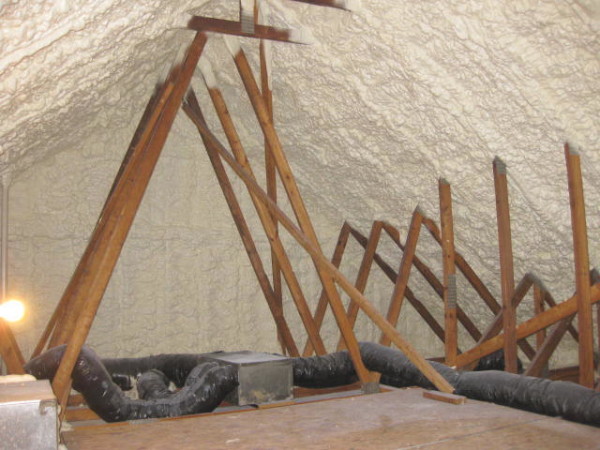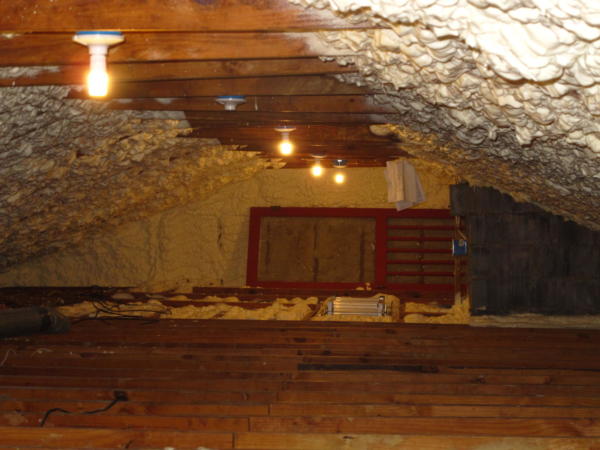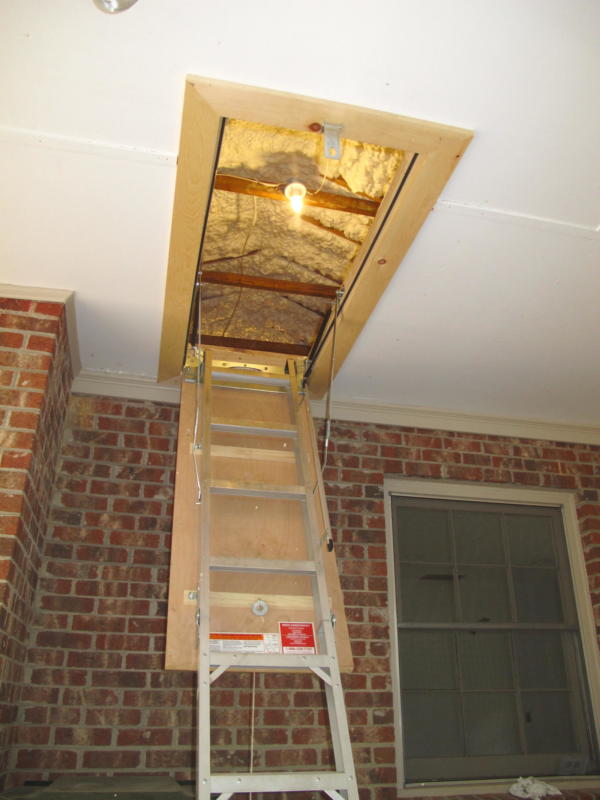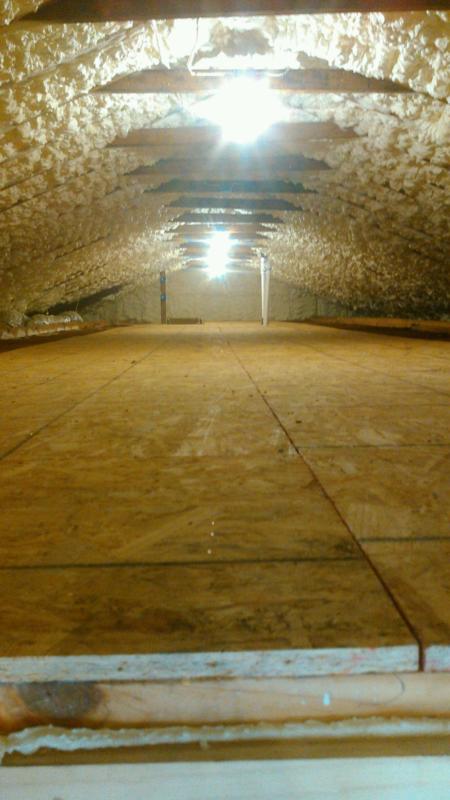Deluxe Sealed Attics and Associated Work
Times are a changing. It is increasingly common for people to decide to seal up their vented attics and to choose spray-foam to do it and otherwise take control of that air-space.
As “Sealed Attics” become more common in Raleigh NC and Wilmington NC I have noticed builders and code enforcement officials struggling with these new designs and the alignment of air-barriers and insulation, skylights, redundant framing… In the past it was a little more monotonous to insulate, especially when air-sealing wasn’t required.
Nowadays code enforcement officials may require a thermal barrier or ignition barrier over the exposed foam and sometimes that part of the scope is as expensive as the foam itself. The presence of certain equipment, the amount of flooring, and the presence of nearby drywall all affect the need for that costly layer.
In general, your combustion HVAC and water heating are affected by sealing the envelope to include that equipment.
While some folks like to spray the foam directly onto the gables and roofs without altering the existing insulation, others require some removal of existing insulation and give reasons for that. Better adhesion, closer temperature equilibrium between the attic and living spaces, and that code requires it… I think fiberglass absorbs the smell of spray-foam more than foam itself, so if possible try to remove as much of the existing insulation as you can. I think whatever you do you should monitor the temperature and humidity with a wireless weather device and try to make sure that the peak of your building envelope is not trapping moisture. It might make sense to have “vapor vents” so that the attic does not trap rising moisture entirely by design.
With density increasing people are often deciding upgrade to have more useful storage space into their homes, so one of the best reasons to seal an attic is the ability to reduce the attic floor elevation given that R-38 on the ceiling requires attic flooring to be on a RAISED platform.
Directly below are a few sealed attics where we opted to to do the hard work of completely removing the insulation that was existing
Below you see an attic fan being used as a foam curing and attic ventilation device in a otherwise completely sealed attic. If the homeowner burns some popcorn he can open the attic door and run this fan to evacuate the air from his home. We left it this way!!!
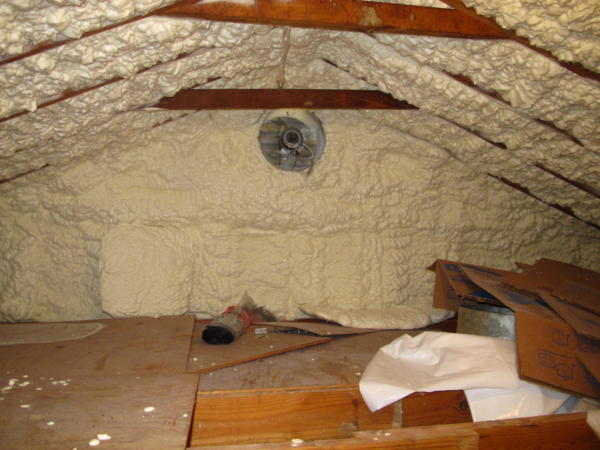
New Access Ladder in Carport
New Flooring throughout attic
Below you see an attempt to get the same level of energy efficiency performance but we lost the usefulness of the attic space for storage, access, service…
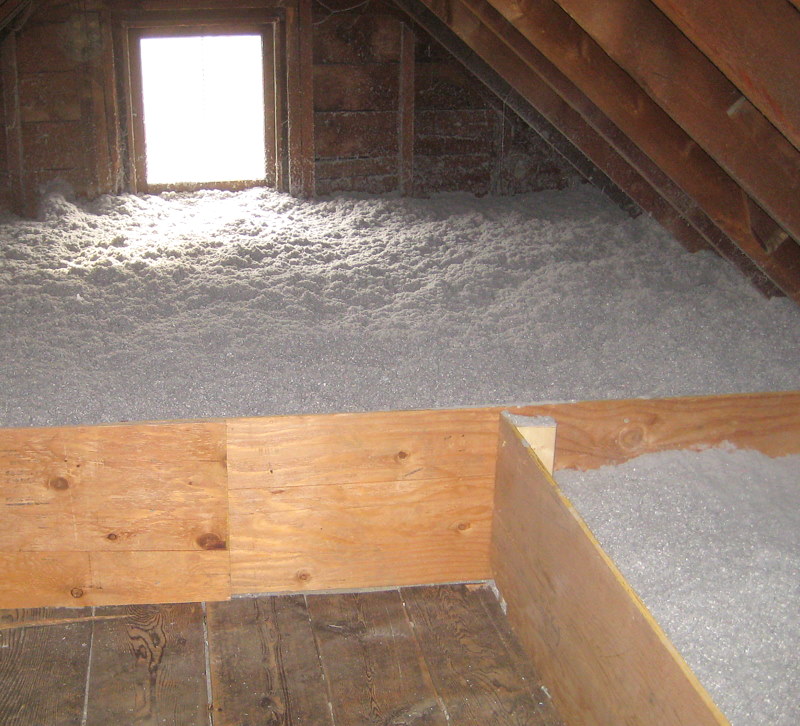
A Deluxe Sealed Attic ceases to be a mess, it is preferred by service professionals, moms, kids, dads, and environmentalists, but we need to hire seasoned professionals for this work and avoid these common mistakes:
- Plan ahead for a “high-negative-affect” because humans generate heat, humidity, and smells which all rise to the peak. Most folks would do well ensuring you could mechanically ventilate the whole home. Something as simple as a nice big bath fan in the center of the attic that has a switch inside the home would be great. You could locate this fan in the ceiling of the home if there is no attic near the roof’s peak. For some related information on this click here.
- Before the foam is installed check and upgrade all your bath-fans and dryer vents and the terminations where they leave the attic. If your house is substantially tighter as a result of air-sealing, your old bath fan might not have enough power to evacuate enough air.
- If your home has existing attic vents near the peak or at the top of the gable ends plan on NOT installing a vapor retarder or barrier in those locations, effectively leaving the OPEN CELL FOAM as a VAPOR VENT. This concept has been recently documented by some of the best building scientists in the game but we have been specifying it for years. If all you have is a powered attic ventilator maybe when you remove the fan you can cover the opening with TYVEK or something that would allow built up moisture to be released back into the environment.
- Have a strategy to keep the attic behaving. Remove all or some of the insulation between the living space and the attic. Maybe blow a little air into the attic via the supply duct-work. And the most important part is to install a humidity sensing device so you can learn how the home is doing at handling moisture.
- Pay extra for access and lighting improvements and try to make your attic more ergonomic.

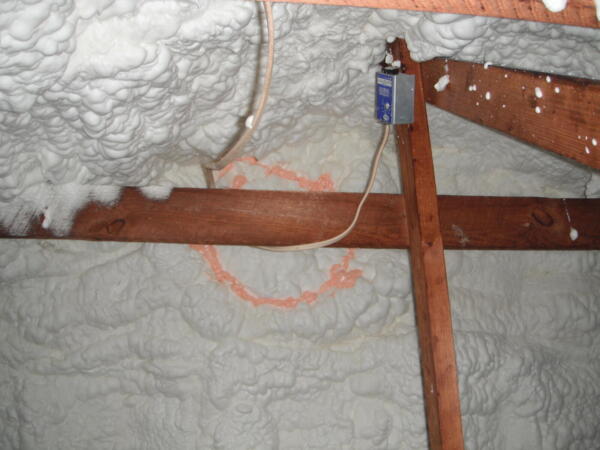
We find that once we have converted the vented crawlspace to sealed, or vented attic to sealed, or especially both, the home is so much tighter that bath-fans, stove vents, even dryers, wont work as well. The different fans will start to compete with each-other. When you commit to detailed weatherization you should upgrade all vents fans, vents-ducts, and their penetrations to be 4″-6″, and always make sure the duct is a short and straight as possible.

